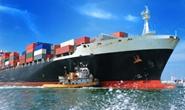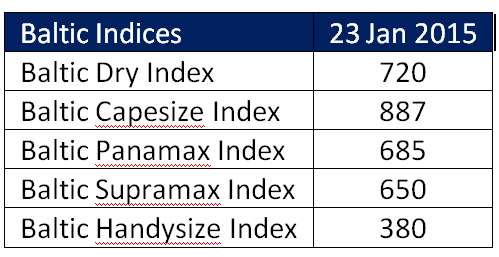Economy

Overcapacity Sinking Baltic Index
Written by Sandy Williams
January 25, 2015
Ship owners are reporting “staggering losses” says the January 15 MID-SHIP Report.
“Dry cargo freight rates are basically in “free fall” because of very low bunker costs coupled with major over supply of ships thus forcing freight levels down to where they were in 1982-1986,” according to MID-SHIP.
The Baltic Indices all registered declines in the week ending January 23. The Capesize Index ended an upwards trend after climbing 351 points early in the week before falling a total of 84 points on Thursday and Friday.

Andersen said he expects a continuing gradual decline in freight rates over the coming years. He predicts global trade will grow at a “sluggish” 4 percent in 2015.
In the U.S., logistic problems are beginning to surface due to winter conditions. Ice is reported on the Great Lakes and tributaries as well as on northern barge routes. Ice on the Illinois River has slowed transit times. Strong steel import activity is still noted at breakbulk terminals along the Mississippi River. Steel import activity is expected to increase during first quarter, says MID-SHIP.
West Coast ports continue to be congested due to logistic problems and the ongoing ILWU/PMA contract negotiations.
In the trucking industry, freight volume was strong in December with higher spot freight rates. Freight availability jumped 51 percent from the beginning to mid-January while spot truck capacity surged to 69 percent, said MID-SHIP. The combination, along with lower diesel fuel costs, has put downward pressure on freight rates. Average national price of diesel fuel was 2.933/gallon as of January 19, 2015.

Sandy Williams
Read more from Sandy WilliamsLatest in Economy

Steel groups welcome passage of budget bill
Steel trade groups praised the passage of the Big Beautiful Bill (BBB) in Congress on Thursday.

Industry groups praise Senate for passing tax and budget bill
The Steel Manufacturers Association and the American Iron and Steel Institute applauded the tax provisions included in the Senate's tax and budget reconciliation bill.

Chicago PMI dips 0.1 points in June
The Chicago Purchasing Managers Index (PMI) slipped 0.1 points to 40.4 points, in June.

Multi-family pullback drives housing starts to 5-year low in May
US housing starts tumbled in May to a five-year low, according to figures recently released by the US Census Bureau.

Architecture firms still struggling, ABI data shows
Architecture firms reported a modest improvement in billings through May, yet business conditions remained soft, according to the latest Architecture Billings Index (ABI) release from the American Institute of Architects (AIA) and Deltek.
